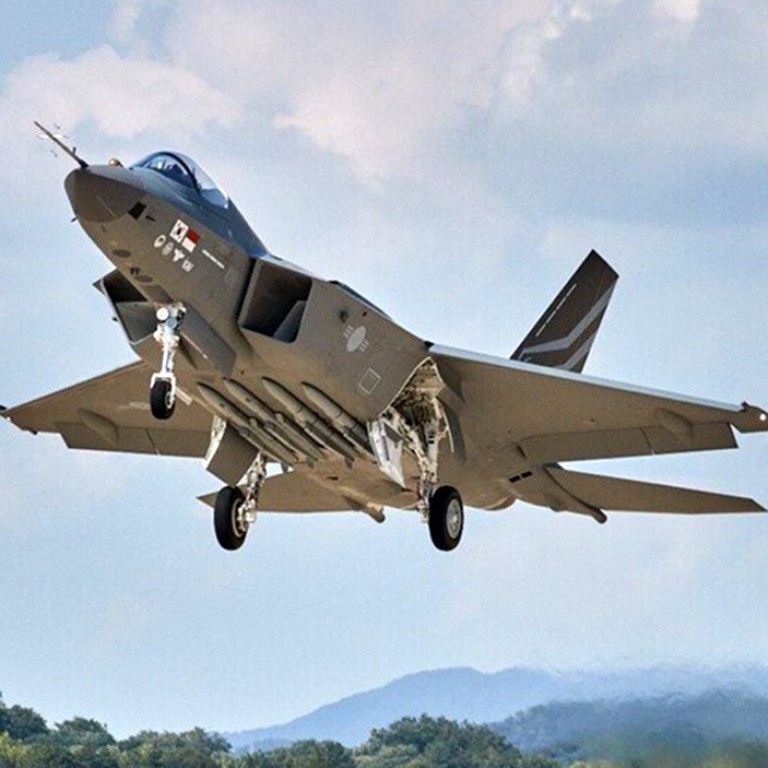
South Korea brings hypersonic tech to the Aukus table in a sign Seoul is moving closer to the US and its other allies
- South Korean Defence Minister Shin Won-sik has confirmed Seoul is in talks to take part in Pillar 2 of the defence alliance
- Analysts say South Korea could ‘bring a great deal of expertise to any collaboration’ with its hypersonic weapons knowledge
In Melbourne on Wednesday, Shin took part in a 2+2 meeting – which are talks involving foreign and defence ministers – between Australia and South Korea.
He confirmed the two countries discussed the possibility that South Korea could contribute to the defence technology sharing pact between Australia, Britain and the US.
“We support Aukus Pillar 2 activities and we do welcome that members are considering Korea as an Aukus Pillar 2 partner.”
“Korea is a country with deeply impressive technology where we do have shared values,” Australian Defence Minister Richard Marles said after the 2+2 meeting.
“As Aukus Pillar 2 develops, there will be opportunities in the future, and we’re seeing that play out in relation to Japan as well.”

Only two countries – Russia and China – are reportedly operating hypersonic missiles in their militaries, while the US and its allies are still in the development phase of supersonic weapons technology.
In August 2020, then-South Korean defence minister Jeong Kyeong-doo first revealed Seoul’s development plans for hypersonic missiles. A test prototype of a South Korean hypersonic cruise missile, dubbed “Hycore” was then revealed in 2021.
An ability to collaborate on key projects in long-range strike via hypersonics, as well as counter-hypersonic defensive systems, would enable the ROK to bring a great deal of expertise to any collaboration
Malcolm Davis, a senior analyst at the Australian Strategic Policy Institute, said that adding South Korea’s advanced defence and high technology sector, including its developments in priority areas such as hypersonics, would be a “good contributor” to Aukus Pillar 2.
“I think an ability to collaborate on key projects in long-range strike via hypersonics, as well as counter-hypersonic defensive systems, would enable the ROK [Republic of Korea] to bring a great deal of expertise to any collaboration, and potentially open up new avenues for development,” Davis said.
“For example, one area that could be pursued beyond military technologies would be hypersonic-based rapid space access, and that would build into the critical opportunities for space collaboration between Australia and the ROK in the space sector.”
“[China and Russia] are more advanced in their development and deployment of such technologies and the tactical benefits of prompt strike capabilities with enhanced range, and an ability to penetrate integrated air and missile defences,” Davis said.

Davis said Beijing would “strongly oppose” any move by Seoul to support or take part in the defence technology sharing partnership.
“It is certain that China will criticise and probably pressure Seoul to step back from such a move, and may try to exploit internal political dynamics in ROK,” he said.
James Lewis, a senior vice-president and director of the strategic technologies programme at the Washington-based think tank Centre for Strategic and International Studies, said Seoul’s participation in Aukus Pillar 2 would be a way to “signal that it is moving closer to the US and its allies”.
“The Koreans probably hope that tech cooperation is less provocative. Korea is rethinking its foreign policy, and while it would prefer to not provoke China, they are not willing to be a tributary state,” Lewis said.
“It’s also a signal to China that playing the neighbourhood bully has consequences. ROK looking at Aukus is a political gesture short of military alliance but moving a step closer.
“On the technology point, the ROK is worried that it is losing its technological edge and looking for outside help to rejuvenate. Aukus might be good for that as an antidote for tech parochialism.”


